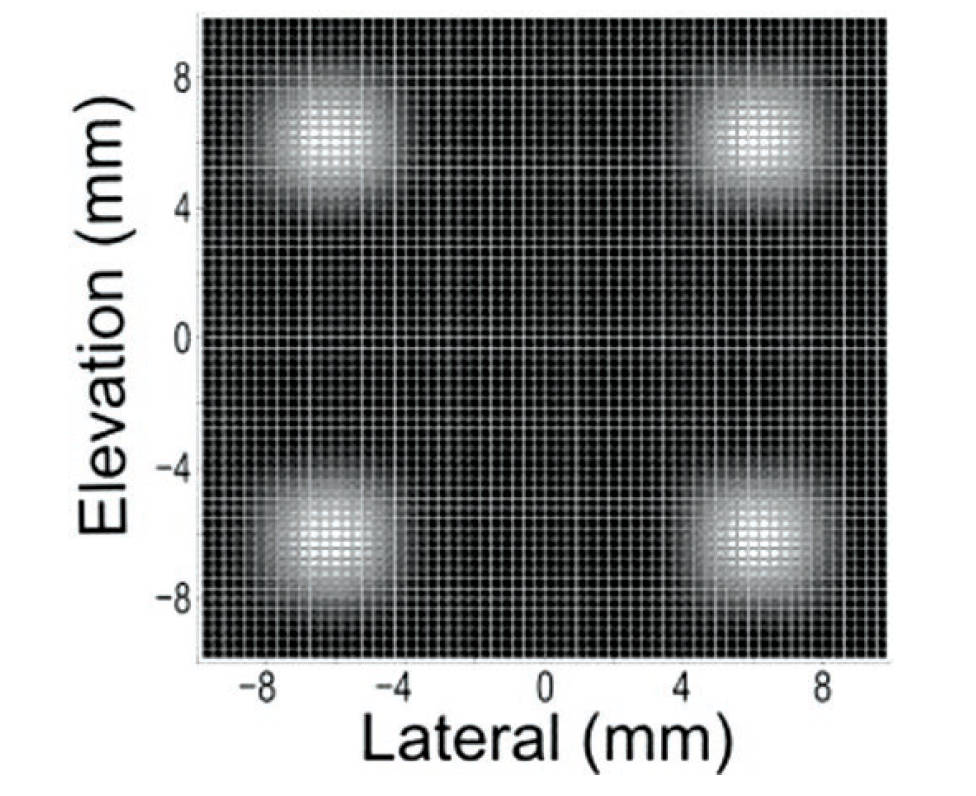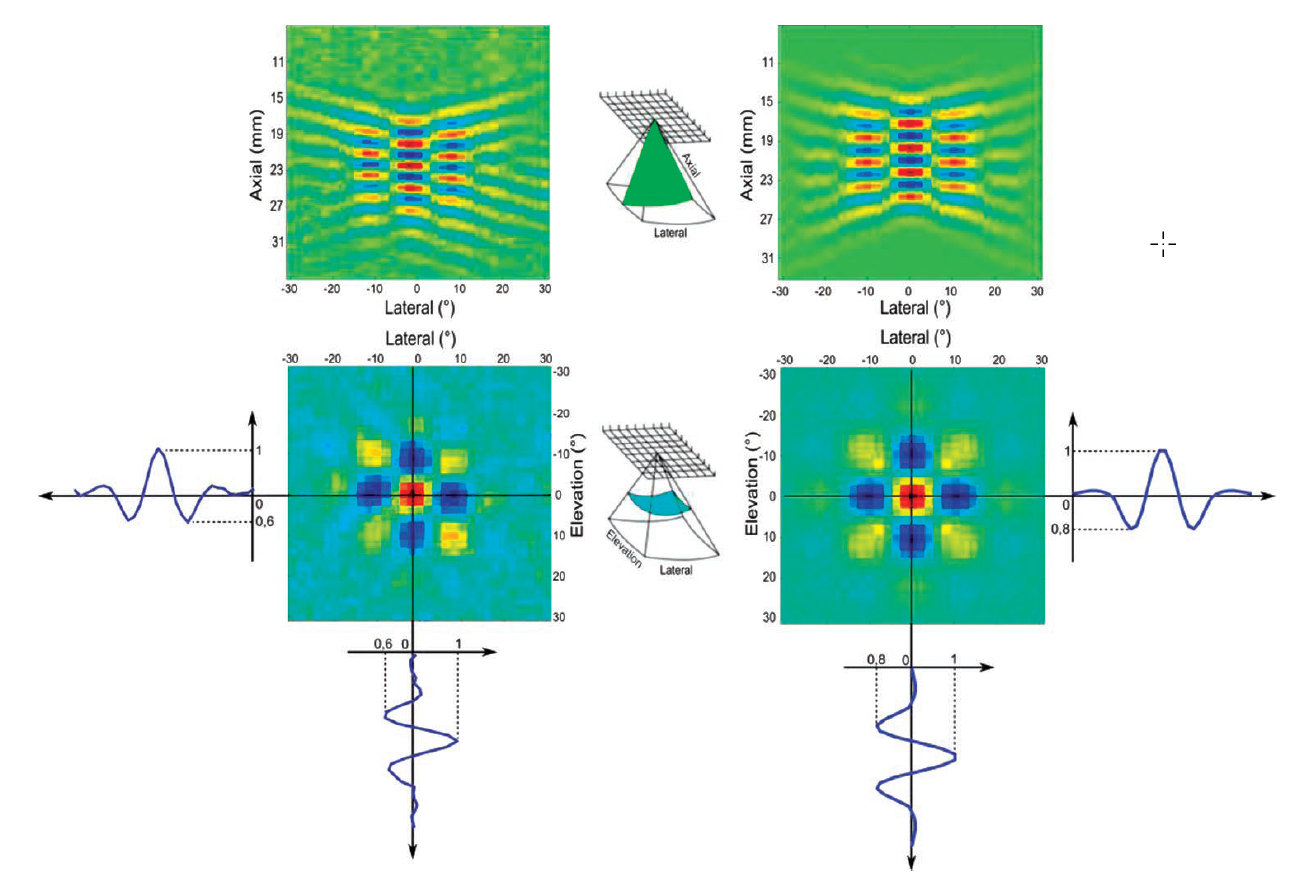The transverse oscillation technique has been initialy developped for imaging of vector 2D vector flow. The principle can be extended to 3D if imaging can be performed with a matrix array.
As for conventionnal TO there must be a multi-dimensionnal phase based motion estimator. For this part our initial developments in the paper
Regarding the beamforming there are several options. In order to increase signal to noise ratio one could be tempted to proceed in a twice 2D-approach producing either lateral or elevation oscillations or a direct 3D approach using a four peaks apodization function. We have chosen this option and used the apodization function represented herunder.

Apodization functions in receipt. Each small square represents
an element of the matrix array; 4096 active channels are used in this
example. Color bar: black→white = 0→1
First of all, in order to validate the possibility to produce a point spread function with oscillations in three dimensions we have performed a very simple simulation under Field II and a simple experiment. The two PSFs are illustrated herunder.

Experimental 3-D PSF with TO (right) compared with a 3-D PSF simulated by Field II (left) with identical parameter setting. The axial/
lateral view is on the top, and the elevation/lateral view is on the bottom. The corresponding lateral and elevation profiles are also reported. The
experimental and simulated 3-D PSF show very similar results.
Several trajectories and parameters have been investigated and the superiority of the phase based approach combined with the 3D TO have been illustrated in different situations. All results can be foun in
